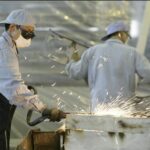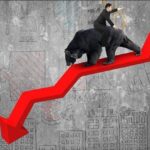A car is composed of three large groups, namely the engine, chassis and electrical groups. The chassis group, which also includes the powertrain and body, will support the power flow process or the flow of power produced by the engine so that the car’s wheels can run. What are the components of a vehicle chassis? You can see the list of car chassis components below.
Chassis Component Names and Their Functions
In general, a car chassis is composed of powertrain and suspension components. The powertrain is responsible for channeling engine power to the wheels, while the suspension system will support vehicle safety and stability. Talking about powertrain, there are 3 drive models in the car, namely
- FWD (front wheel drive)
- RWD (rear wheel drive)
- 4WD (4 wheel drive)
Even though there are three types, the components used are generally the same. Anyway, see the full review below.
Clutch
The function of the clutch is to gently connect and disconnect the engine rotation from the transmission. The clutch is very useful when used when we are running the car or when there is a traffic jam, with the clutch the transmission gear shifting process will feel smoother.
The clutch consists of two metal pieces that rotate at the same RPM, namely the flywheel and pressure plate, as well as the clutch lining which is in the middle of these two metals. When the pressure plate presses against the flywheel, it will cause the clutch lining to be pinched and this will cause the engine rotation to connect to the transmission.
However, in the automatic clutch system or what we usually know as a torque converter. This clutch works based on fluid compressive force. The compressive force of this fluid will become greater as the engine speed increases, so we don’t need to operate the clutch manually.
Transmission
The function of the transmission is to manipulate engine output. We know that there are several conditions where a car requires large torque and there are also conditions that require the car to have high speed. The transmission’s task is to overcome the above conditions, by regulating the shift ratio between gears.
In position 1, the gear ratio tends to be large so that the transmission output rotation is much smaller than the transmission input. However, the torque is very large. When in 2nd gear and onwards the gear ratio becomes smaller, this makes the output acceleration level greater but the maximum torque decreases. In a transmission, torque is inversely proportional to engine RPM.
Similar to the clutch, the transmission also has an automatic version. This version can adjust the gear ratio according to the road and vehicle speed. So we need to just focus on the steering without fussing about moving the transmission lever.
Propeller Shaft
In FR or 4WD drive vehicles you will find components in the form of long tubes made of steel. This component is the propeller shaft, which functions to connect the transmission rotation at the front of the car with the axle at the back of the car.
The reason for using this pipe-shaped component is so that power transfer can take place effectively. If we use a chain, there is a risk that the chain will stretch quickly due to expansion and noise. But because we use an iron shaft, it will be more resistant to expansion and the torsional force will be distributed perfectly.
Universal joint
Between the transmission and rear axle, the height is definitely not always parallel. This is caused by the location of the axle which is under the suspension while the transmission is in the car body. So additional components are needed so that the propeller can function without being disturbed by this.
Universal joints are components that are designed flexibly to connect torsional moments from any angle and direction. Usually there are two universal joints located behind the transmission and in front of the axle.
Axle/Differential
The differential function is to differentiate the rotation of the left and right wheels of the car. Why should there be a difference? When a vehicle turns to the left, for example, the distance traveled by the left and right wheels is definitely different. If the rotation of the wheels is not differentiated, one of the wheels will slip and quickly cause wear and tear.
Rear Axle
The next component is a rod-shaped axle that connects the differential to the wheel axle. At the end of the axle, a wheel bearing will be installed to support the axle against the car body.
There are two types of axles used in cars, namely the rigid axle and the independent axle. On a rigid axle, the left and right wheels will be located on one rigid axle so that if one wheel is affected by the suspension effect, the other wheel will be affected. Meanwhile, in the independent type, there is a flexible joint attached to both ends of the axle shaft. Its function is so that the left and right wheels can be freed when one of the wheels is affected by the suspension effect.
Spring
Springs are included in the suspension system, the function of springs is to dampen road vibrations and provide a soft effect when the car goes over bumps or holes. Springs are made of flexible steel with a certain design. For example, thread design. This spring has quite good damping power so it is widely used in cars with independent suspension systems. Another model is the leaf spring model, which is flexible steel designed like a sheet. The strength of leaf springs is much higher than thread springs, so this type is often used for heavy cars such as trucks and buses.
Shock absorber
Please note, a shock breaker or shock absorber is different from a spring. This component does not have resistance to pressure, but this component will absorb the shock created when the spring acts. When the car passes over a pothole, there is automatically a downward pressure force which is resisted by the spring. But because of the flexible nature of the springs and the weight of the vehicle, the shocks will be too strong.
In this case the shock absorber will prevent shocks from occurring in the suspension system. The way a shock absorber works is by resisting shaking forces through a fluid mechanism.
Stabilizer bar
The stabilizer component is only available in independent or independent suspension systems. The stabilizer is used so that the left and right wheels are not too far apart. The weakness of the independent suspension system is that when one wheel passes over a bump or hole, you will feel a large rolling effect because the other wheel does not hold up. A stabilizer will be used so that the other wheel can resist rolling when one wheel is shaken.
This component is composed of two components, namely the swing bar and stabilizer link. The swing bar is the axis that connects the left suspension system and the right suspension. Meanwhile, the stabilizer link will connect the end of the swing bar to the shock absorber.
Steering system
The steering system is also included in the vehicle’s chassis components, its function is not only to control the direction of the front wheels but also to lighten the driving force. We know the power steering system, this system was created as an assist so that when we turn the steering wheel it can be lighter.
In general, there are two types of power steering, namely the hydraulic type and the electric type. The hydraulic type utilizes the hydraulic pressure obtained from the steering pump to push the steer rack, while the electric type uses a motor that directly moves the steer rack.
Braking system
The brake system functions to reduce vehicle speed significantly. The way the brake works is by utilizing friction force which can convert the rotational energy of the wheel into heat energy. In the brake system, two materials made from iron and asbestos will rub together. So it will reduce the rotation speed.
In cars there are two types of brake systems used, drum brake systems and disc brake systems. Drum brakes are known for their good braking power but are less responsive, while disc brakes are more responsive.
Wheels and Tires
The final component is at the end of the powertrain, its function is to convert rotational energy from the powertrain to run the vehicle. Wheels are composed of rims and tires, the rims or rims are the wheel frame that supports the vehicle. For this reason, the strength of the rims cannot be underestimated. Meanwhile, the tire’s function is to absorb small vibrations on the road and create traction so that the wheels don’t slip. There are several types of tires themselves, including hard, medium and soft. Soft type tires have a soft structure so they will wear out quickly but their grip is quite good.
This is a complete article regarding the names of vehicle chassis components and their functions. Hopefully it can broaden our insight and be useful for all of us.











